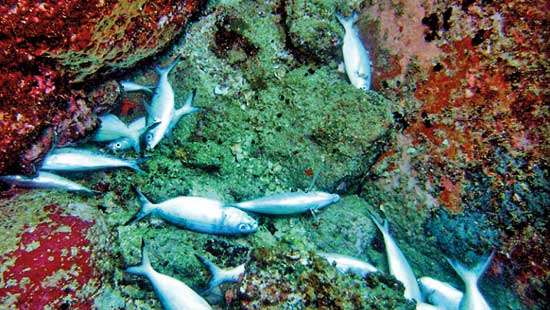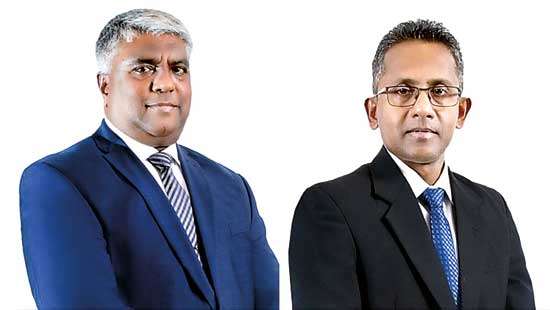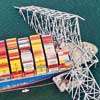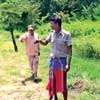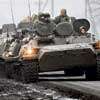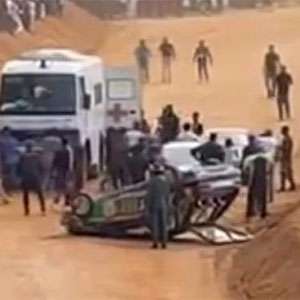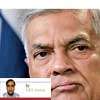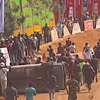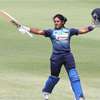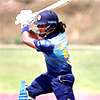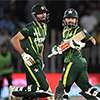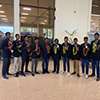
President Premadasa ,minutes before the explosion on May 1, 1993.
By
D.B.S.Jeyaraj
Former President Ranasinghe Premadasa was killed 30 years ago on 1 May 1993 at 12. 45 p.m. along with 17 others in a bomb explosion that also injured 38 more persons at the Grandpass Road – Armour Street Junction in Colombo.
He was inspecting a May Day procession of the party. The assassin was an LTTE suicide bomber Kulaveerasingham Veerakumar alias Babu, who wore an explosive-laden vest.
Premadasa, born on 23 June 1924 served as Sri Lanka’s Prime Minister from 1978 to 1988 and as President from 1989 to 1993.
The political ascendancy of Ranasinghe Premadasa in Sri Lanka through the United National Party (UNP) was indeed a formidable feat and praiseworthy accomplishment. For a person of subaltern status in class and caste terms to rise to the pinnacle of power in a party like the UNP amounts to a political fairy tale.
This column focuses on Ranasinghe Premadasa’s rocky road to Sri Lanka’s Presidency this week to denote his 30th death anniversary. This article - based upon some of my earlier writings - will emphasize the former President’s remarkable political journey from 1970 to 1988.
Colombo Central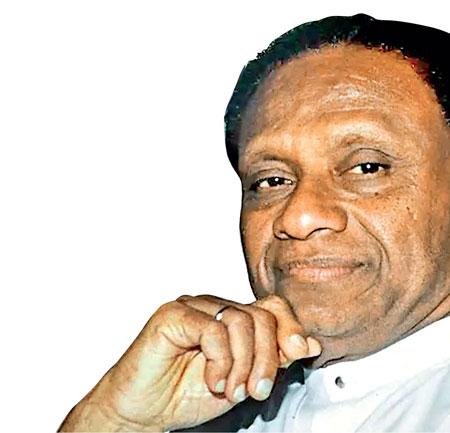
When elections were held in May 1970, the United Front comprising the Sri Lanka Freedom Party(SLFP), Lanka Samasamaja Party (LSSP) and Communist Party (CP) won 116 of 157 seats in Parliament. The UNP was reduced to 17 seats.
Ranasinghe Premadasa was elected first MP for Colombo Central with 69, 310 votes. It was a multi-member constituency electing three MPs. Premadasa had previously been elected as the third MP for Colombo Central in March 1960 with 29,828 votes and as the second MP in March 1965 with 64,438 votes.
Ex-Premier and Party Leader Dudley Senanayake opted to take a backseat due to ill health and let his deputy leader J.R. Jayewardene become Leader of the Opposition in his place. Premadasa was appointed Chief Whip of the Opposition.
Both JR and Premadasa felt – independent of each other – that the UNP needed to be revamped and possibly restructured if the party were to have a bright future. UNP Leader Dudley Senanayake was unwilling to change or accommodate changes. Dudley Senanayake, who had some health issues, passed away on 13 April 1973.
The death of Dudley Senanayake had a tremendous impact on the people of Sri Lanka. There was a spontaneous surge of sympathy and affection for Dudley all-round. These sentiments turned the tide politically for the UNP.
Master strategist JR
JR, the master strategist, wanted to channel this shift in public mood constructively and turn the UNP into a winner at the next elections. For this, he needed to reorganise and refurbish the party. JR who was aware of his limitations knew that he lacked the common touch required for an exercise of this type. He realised that Premadasa, the man of the masses, was necessary for this task. So he summoned Premadasa for a one-on-one meeting.
In a frank discussion, JR told Premadasa that he agreed with Premadasa’s desire to broad-base the UNP and turn it into a party of the common man. He requested Premadasa to join hands with him in this. Premadasa agreed and accepted JR’s sincere invitation. Thereafter, the JR-Premadasa partnership worked hard to transform the party.
Slowly, the party turned into a party of the people. The UNP began winning by-elections regularly.
With General Elections drawing near, the UNP list of candidates was finalised by December 1976. JR was the accepted leader but who was to be the second in command? Although Premadasa worked for the party as if he were the Deputy Leader, he had not been duly installed as such.
There were fears that the tussle-to-be Deputy Leader could cause divisions in the party on the eve of elections.
Intra-party Contest
|
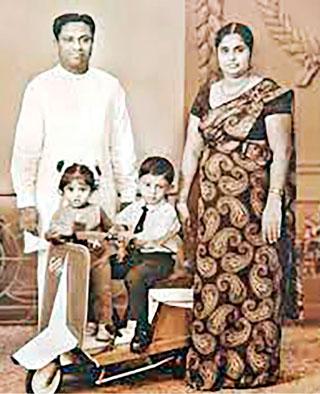
A family portrait of President Premadasa
|
JR solved this issue by organising a novel intra-party contest. On 29 January 1977, all the selected UNP candidates were summoned by JR and told they had to elect a 10-member Party Leadership Committee for elections from among themselves. Each of them had to vote for 10 persons of their choice. It was compulsory to cast one vote for a Tamil and another for a Muslim.
The move took everyone by surprise and there was no space or time for anyone to canvass or lobby. When the votes were counted by then UNP Secretary Daham Wimalasena and Assistant Secretary A.B. Talagune, 10 persons had been elected. Their names and votes received were as follows;
1. R. Premadasa -118
2. Gamini Dissanayake - 108
3. A.C.S. Hameed -93
4. K.W. Devanayagam -74
5. Gamani Jayasuriya - 73
6. Ronnie de Mel - 65
7. E.L. Senanayake - 65
8. Lalith Athulathmudali - 62
9. Cyril Mathew - 41
10. E.L.B. Hurulle -38
Ranasinghe Premadasa who topped the list was appointed as Chairman of the committee. JR also made it clear that Premadasa would deputise for him at party meetings if and when necessary.
The UNP tasted unprecedented success in July 1977 when it won 141 of the 168 seats in Parliament. Premadasa was re-elected as the first MP for Colombo Central with 94,128 votes. J.R. Jayewardene became Prime Minister. Premadasa was sworn in as Minister of Local Government, Housing and Construction. He was also made Leader of the House.
Prime Minister in 1978
After the Executive Presidency was ushered in by way of the Second Amendment to the Republican Constitution, J.R. Jayewardene became President in February 1978.
He was succeeded as Prime Minister by Premadasa. He served as Prime Minister from 1978 to 1988. Ranasinghe Premadasa was the first and only member of a non-Govigama caste to become Prime Minister of Sri Lanka.
There were however more hurdles to be cleared before he could become the first and only non-Govigama President of Sri Lanka.
Despite some strains and stresses, the working relationship between President Jayewardene and Prime Minister Premadasa proved durable and constructive.
Whatever his future ambitions, Premadasa worked loyally under JR and did not engage in any plot or underhand manoeuvre against the UNP leader.
He also supported JR’s political stratagems including the Referendum to extend Parliament’s term by a further six years.
J.R. Jayewardene was 71 when he became Prime Minister and later President. His two terms of office were due to expire in 1988. Thereafter, a fresh Presidential Election had to be conducted.
JR’s foremost deputies who were much junior to him were content to wait until the ‘old man’ retired to don the mantle instead of backstabbing him. The shrewd JR also promoted some competition among his ‘would-be-successors’ to keep them on edge.
Four Political Contenders
There were four main potential contenders for the Presidency – Ranasinghe Premadasa, Gamini Dissanayake, Lalith Athulathmudali and Ranil Wickremesinghe. Since the entire island was going to be one huge ‘constituency’ for the Presidential Election, the contenders concentrated on building up an all-island political base through innovative projects.
Premadasa had Gam Udawa; Dissanayake had Swarna Bhoomi; Athulathmudali had Mahapola and Wickremesinghe Yovunpura. It soon became apparent that Premadasa was the frontrunner with Athulathmudali and Dissanayake as his close rivals.
The Indian intervention in Sri Lanka and the signing of the Indo-Lanka Accord in 1987 by J.R. Jayewardene and Rajiv Gandhi brought about a political crisis on the island. While Gamini Dissanayake and to a lesser extent Ranil Wickremesinghe supported JR in this exercise, Premadasa and Athulathmudali opposed it.
Although Premadasa went through the motions of supporting the 13th Amendment in Parliament due to party discipline, he was opposed to the presence of the Indian Army in Sri Lanka and the introduction of Provincial Councils.
Meanwhile, the JVP insurgency raged on in the south, while the LTTE battled the Indian Army in the north and east.
It was under these circumstances that the second Presidential Election was scheduled. New Delhi, represented by High Commissioner J.N. Dixit, indicated to JR that Premadasa was not welcome as a future President. Gamini and Lalith kept staking their claim to be the candidate. JR himself was unhappy with Premadasa for his hostile stance towards Indian intervention.
At one point, JR even thought of bringing a Constitutional Amendment and contesting elections again for a third term.
There was also subterranean resentment within the upper- echelons of the UNP towards Premadasa being the Presidential candidate.
The ‘commoner’ had been grudgingly tolerated as a ‘toothless’ Prime Minister but Premadasa to be the all-powerful executive President, seemed too much to stomach.
Break Away From UNP
Premadasa realised the undercurrents of hostility and resentment towards him. He began suspecting that either JR may contest again or nominate Gamini Dissanayake as the Presidential candidate. So, Premadasa began quietly preparing to break away from the UNP with his supporters and contest independently if he were denied nomination as a candidate.
He knew it would be a bold gamble and that the UNP’s fragmentation would divide votes and help SLFP candidate Sirimavo Bandaranaike. Still, it was a gamble, he was prepared to take as he felt he had no choice.
Fortunately, for all concerned, such an eventuality did not occur. JR was dissuaded from taking the extreme step of contesting a third time. He was 82 and his wife Elena was determined that JR should retire from politics.
JR too was so inclined. By July 1988, it became known among close confidantes that JR was not going to contest again. But in a tactical move to keep the SLFP guessing and Presidential aspirants in the UNP quiet, JR kept the question of his contesting again wide open.
Ranjan Wijeratne
But the important issue was to select a suitable Presidential candidate. This was the time when the blunt, no-nonsense Ranjan Wijeratne was UNP Chairman. The former planter cum ex-Army officer undertook an intensive survey of the political environment regarding prospects for the UNP at the Presidential Election.
Ranjan Wijeratne realised that the UNP may have a slim chance of winning the poll only if Ranasinghe Premadasa was the Presidential candidate.
Any other candidate would certainly lose to the SLFP. Furthermore, if Premadasa split from the party and contested separately, the UNP was likely to finish a poor third. Hence, the best possible UNP candidate would be Ranasinghe Premadasa.
Presidential Candidate
After this realistic appraisal by Ranjan Wijeratne, who had no personal favourites and had only the interests of the party in mind, JR too saw the light. He decided to nominate Premadasa as the Presidential candidate.
He also summoned Lalith Athulathmudali and Gamini Dissanayake and told them of his decision. He got them to pledge support to Premadasa. When this was conveyed unofficially to Premadasa by Wijeratne, the former abandoned his plans to break away and contest separately. JR announced formally in September 1988 that he was retiring from politics.
This announcement was followed by a UNP meeting comprising the Parliamentary Group and Working Committee. Instead of an inner-party election to finalise the candidate, JR sprang a surprise by proposing the name of Ranasinghe Premadasa as the Presidential candidate and would-be successor.
In a further twist, JR got Lalith Athulathmudali and Gamini Dissanayake, Premadasa’s chief competitors, to jointly second Premadasa’s nomination. Ranasinghe Premadasa was unanimously elected as the Presidential candidate of the UNP.
Nominations closed on 10 November 1988. The Presidential Election was held on 19 December 1988. In a tight contest, Ranasinghe Premadasa of the UNP came first with 2,569,199 (50.43%) votes. Sirimavo Bandaranaike of the SLFP came second with 2,289,860 (44.95%) votes.
Oswin (Ossie) Abeygunasekara of the SLMP came a poor third with 235,719(4.63%) votes. Ranasinghe Premadasa was elected as the second Executive President of Sri Lanka.
Four years and four months
Premadasa was 65 years of age when he became the Executive President of Sri Lanka. After more than four decades of active politics, he had reached the top combatting tremendous odds. Premadasa was a dedicated man on a mission with a positive vision for Sri Lanka. Yet, he was able to discharge his duties as President for only four years and four months.
Ranasinghe Premadasa was assassinated by a Tiger suicide bomber on 1 May 1993.
He was succeeded as President by the then Prime Minister Dingiri Banda Wijetunga.
D.B.S.Jeyaraj can be reached at dbsjeyaraj@yahoo.com






